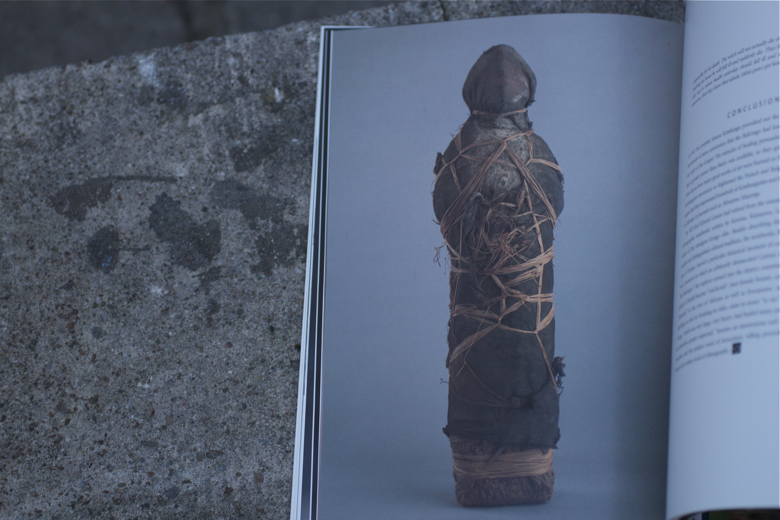The Bantu people of the Congo Basin in Central Africa use the term minkisi (singular Nkisi) to describe both spirits and the objects they inhabit. In 1993 the Smithsonian Institution exhibited Astonishment and Power: Kongo Minkisi & The Art of Renee Stout and published an accompanying book, pictured here. This topic is complicated and fascinating. These works are not sculptures; they are not dolls. They are objects of power, described poetically by Kavuna Simon in 1915:
In my country there is an nkisi called Na Kongo, a water nkisi with power to afflict and to heal; other minkisi have these powers also. They receive these powers by composition, conjuring, and consecration. They are composed of earths, ashes, herbs, and leaves, and of relics of the dead. They are composed in order to relieve and benefit people, and to make a profit. They are composed to visit consequences upon thieves, witches, those who steal by sorcery, and those who harbour witchcraft powers. Also to oppress people. These are the properties of minkisi, to cause sickness in a man, and also to remove it. To destroy, to kill, to benefit. To impose taboos on things and to remove them. To look after their owners and to visit retribution upon them. The way of every nkisi is this: when you have composed it, observe its rules lest it be annoyed and punish you. It knows no mercy.*
Nkisi were made by a nganga (healer) in order to harness the powers of the spirit world by containing them in a vessel. The ngaga drove nails into specific hunter nkisi (nkondi) to encourage the spirit to seek out and punish wrongdoers. It was the nkondi that were most collected and brought back to nineteenth-century Europe, creating a sensation that helped inspire the modern art movement. Although they are rarely made today as tools for healing and retribution, artists continue to reference nkisi in their work. Renee Stout, for example, makes potent objects that she links to her personal history.
*MacGaffey, Wyatt, The Eyes of Understanding: Kongo Minkisi, 1993 Smithsonian Institution, p21.














No comments:
Post a Comment